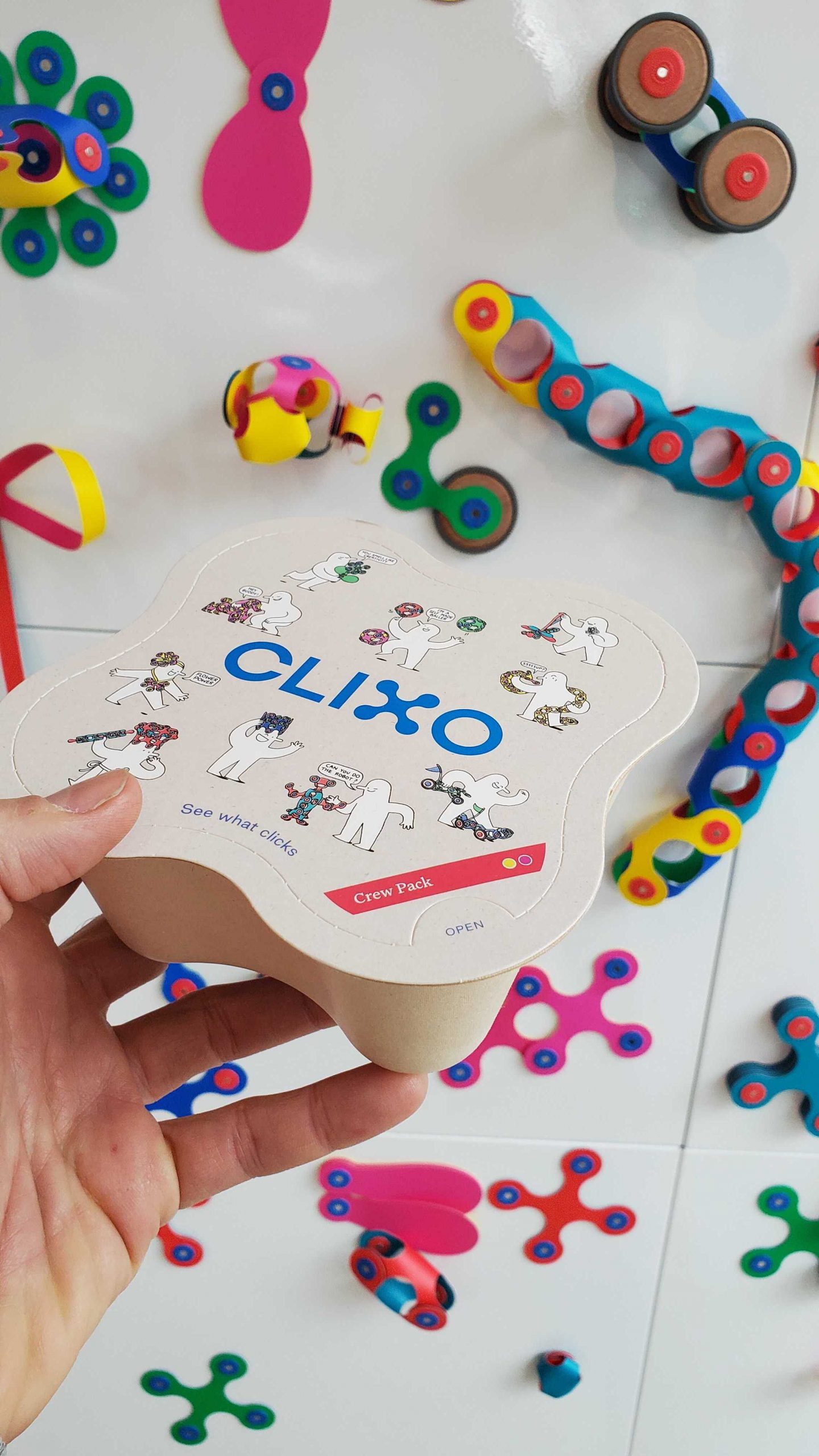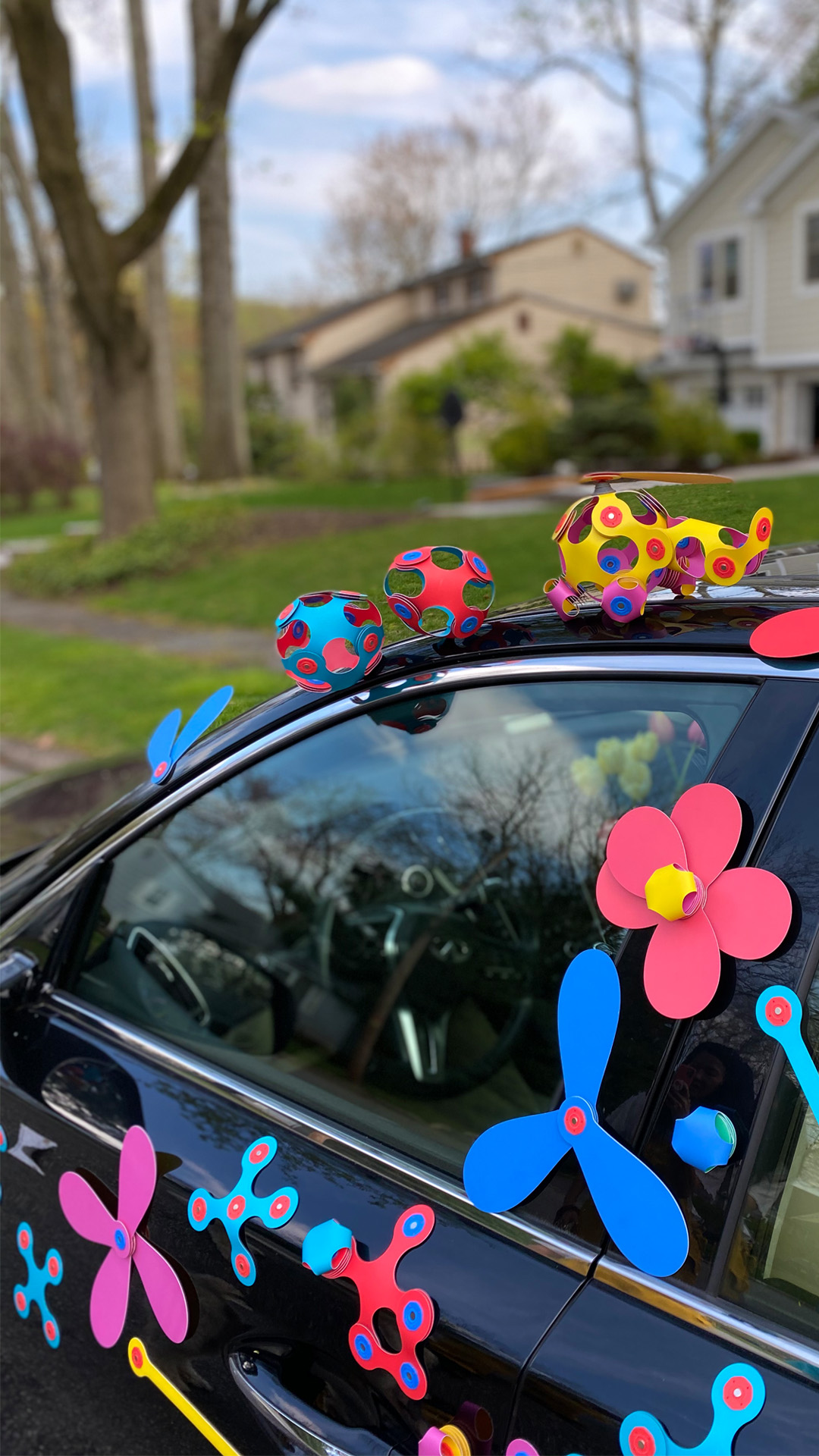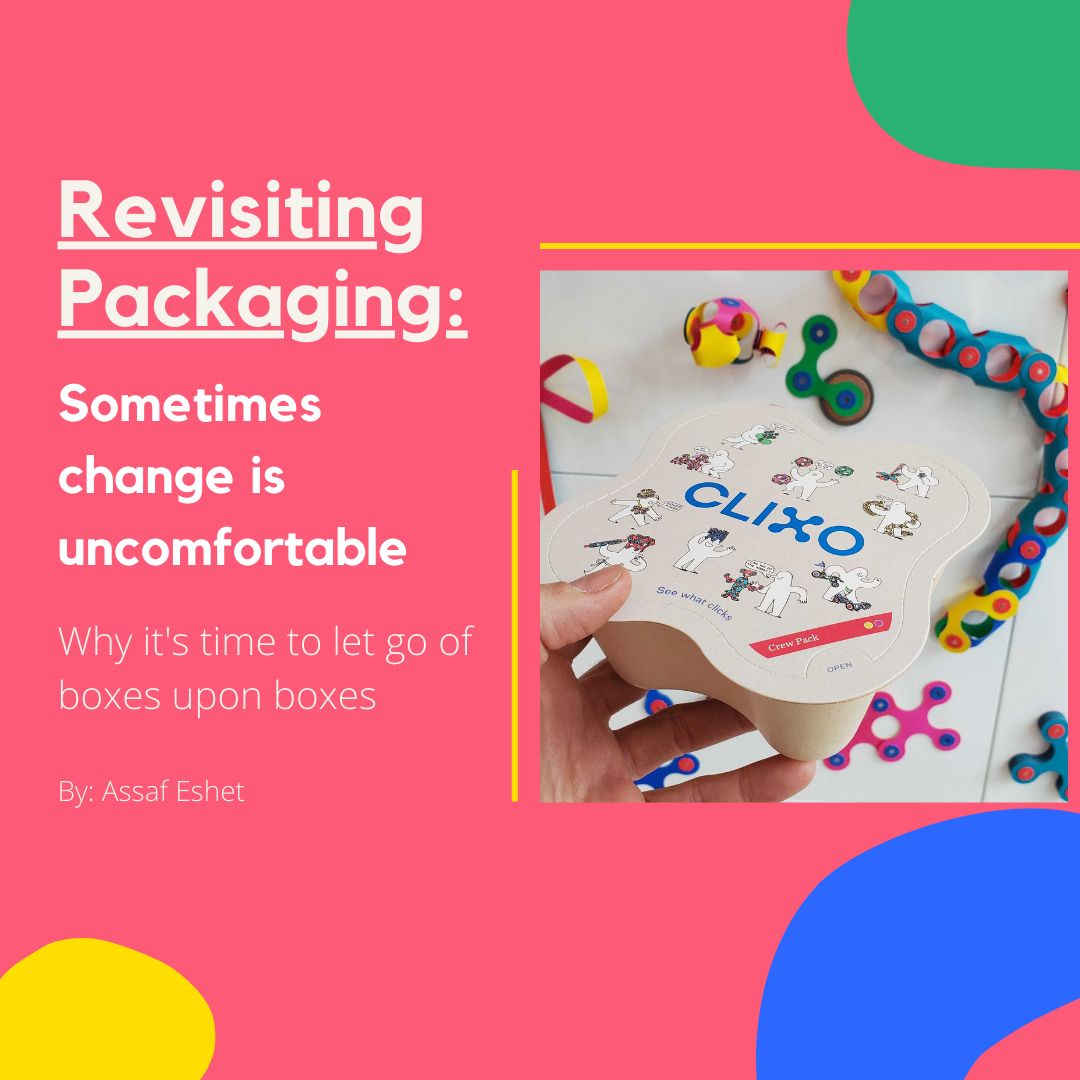Revisiting Packaging: Sometimes change is uncomfortable.
Why it’s time to let go of boxes upon boxes.
Back in August when Clixo had first launched, we posted a piece about our (somewhat unusual) thinking around packaging. Yes, we are doing sustainable packaging, but that’s hardly the big news. What’s different about Clixo’s packaging is that it’s, well, almost like anti-packaging.
Say what?

As you can see, the recyclable box Clixo comes in is very low profile and unobtrusive. Unlike standard packaging in the toy industry, where the boxes toys come in are then used for storage, Clixo’s packaging is meant to be recycled or repurposed.
Over the holidays, we got a lot of feedback from Clixo customers who loved the product, but were requesting the kind of packaging that they are used to.
In other words, they wanted to stay in their comfort zone, with packaging that doubles as storage.
We thought about this request long and hard. On the one hand, we pride ourselves on developing and innovating Clixo in very close dialogue with our community, and we take the feedback we get very seriously. But on the other hand, we felt very strongly that the thinking behind our packaging choice was a direct representation of core values we hold as a company. On top of that, we’d reached our original stance based on the extensive consumer testing we did even before launch, and we’d heard time and again that toys which are stored in boxes end up in another box — be in a chest or a closet — and often stay there.
As we were mulling over this dilemma, I happened to run into a parent who lives in the Clinton Hill neighborhood and regularly frequents our play lab. I was deep in an internal debate over the packaging, and the conversation I had with this parent came at the exact right moment. In simple terms, she just got it. She really understood our philosophy around Clixo, and how our packaging may be difficult to adjust to at first, but is a genuine representation of our core ethos around play. This made me realize two things:
1. We needed to stick to our intuition, but
2. We needed to do a better job at educating our community about the thinking behind our packaging
So, without further ado, let me explain.
Play as Unboxing Versus Play as Play
One of the most troubling aspects of the toy industry today is the way that mass manufacturing and the rise of licensing has led to a never-ending race to attract eyeballs through flashy packaging. The toys that sell best these days are often not the most thoughtfully created toys, but the toys that come in the most attention-grabbing packaging. The toy industry has learned how to play into children’s weak spots, luring them in through collectibles and characters they see in the media. The result is that buying toys has become more about the dopamine rush of unboxing than the long term, creative and often educational engagement that occurs with thoughtfully designed toys.
It makes total sense that a toy which hasn’t been designed for long-term entertainment will need a storage container. After all, if most of the excitement comes from unwrapping and then a child quickly grows bored of a toy, it’s completely reasonable that parents would want a nice (ideally modular) storage container to put that unused toy away in. Original packaging serves this purpose. All you need is a closet with some shelves, and there you go! You can pack box upon box.

But let’s think about this a little more deeply. Isn’t the whole notion of storing toys away in boxes, piled on top of each other, in some hidden place, a huge barrier to play? It makes getting the toy out a whole production. The fact that parents prefer this isn’t a good sign: it’s an indicator that either:
1. The toy is so boring that children don’t ask to get it out very often, so the hassle is minimal
2. The toy is so aesthetically offensive that parents really don’t want it laying around, or
3. Both of the above.
Is that really the best we could hope for from a toy?
At Clixo, we don’t think so. We think that thoughtful toys are meant to be universally accessible, endlessly entertaining, and aesthetically complimentary to more adult environments.

Similar to the principles behind the famous child “Cockpit” designed by Bruno Munari (a jack of all trades and an idol of mine), Clixo has been designed to intentionally dissolve the boundary between object of play and the storage of said object: Clixo is always available for play, partially because it is self-storing.
Say goodbye to boxes. Say hello to creativity.

What I realized in my conversation with our friendly neighborhood parent is that parents, just as much as kids, need to be encouraged to be creative in their thinking. “Of course it was uncomfortable at first,” she said. “I wasn’t used to a toy that naturally integrates with the apartment rather than is put away after play, but I quickly got the hang of it and now I see how cool it is for a toy to be always ready to go.”
She was especially inspired after she visited our play lab and saw all the creative ways that Clixo was integrated with the environment:
She realized that Clixo didn’t need to just lay on the ground or sit on a counter until its next usage — it could make a shape on the kitchen appliances, the desks, the bed frame — anywhere her child felt inspired to create.
“Also,” she added, “if I really needed to ever store it somewhere, I could always use storage I already have, like a Tupperware or a zip lock bag. Honestly though, I don’t see myself doing that. Now that it’s always around, I even find myself picking it up and playing with it.”
Change is Tricky. Especially for Adults.

One of the things we love so much about children’s minds is how open they are, and how quick to adapt. Among our avid community of Clixo-enthusiasts, no kid has complained about a lack of storage options. You might say, “well yeah duh,” but it’s worth pausing to think through why that is. It’s not like children aren’t used to packaging being a certain way. Like their parents, they also have navigated the standard-issue toy box plenty of times. But instead of being so resistant to change, children are much better at taking it in stride. Give them a stack of Clixo, get rid of the box, and they’ll never think to ask about it, they will just naturally come up with creative ways to play with it and place it.
For the parents out there, here’s my suggestion. Embrace the discomfort. Innovation naturally brings some growing pains: just think about Tesla’s model of car charging points, for one example among many.
We’re very confident that if you think it through and accept that the real purpose of a toy is to encourage play (and the best way to do that is to have a toy naturally designed to be accessible and adaptable) then letting go of packaging is a step in the right direction.
Sure, you might have some knee-jerk reactions to it at first, but hey, when is it ever better to play it safe in the realm of creativity?
Happy playing,
Assaf
